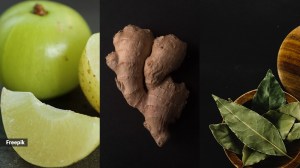Basil, mint, coriander and time: PAU has a new menu for Punjab
Diversification is thinking small. More specifically, the height of a bunch of dhaniapatta... or a sprig of basil. In a 1.5-acre experimenta...

Diversification is thinking small. More specifically, the height of a bunch of dhaniapatta… or a sprig of basil. In a 1.5-acre experimental farm here, Punjab Agricultural University experts are growing an herbal alternative for the state’s beleaguered farmers.
Dotted with patches of basil, mint, coriander, turmeric and fenugreek, the farm may look like an outsize kitchen garden, but PAU professionals firmly believe the herbs are an excellent option for agriculturists looking to beat the rice-wheat cycle with low yield-high value crops.
Apart from the regular kitchen cabinet spices and herbs, the PAU is experimenting with ashwagandha, safed musli, geranium, patchouli, asparagus, lemon grass, milk thistle, safflower, brahmi and giloe.
‘‘All these plants have multiple uses, either in the manufacture of medicines and tonics or in the cosmetic industry,’’ says Dr S S Saini, PAU’s agronomy expert and the architect of the four-year-old herb garden. Safed musli, ashwagandha, asparagus and brahmi, for instance, are widely used in health tonics, while mint, geranium etc are in high demand in the perfume and oil industries.
The project started small, but received a fillip last year after PAU vice-chancellor Dr Kirpal Singh Aulakh visited the herb garden conceptualised by President A P J Abdul Kalam at Rashtrapati Bhavan last year.
Interestingly, even as Dr Aulakh was backing the idea as a farmer-friendly diversification route, the president, apparently impressed by the PAU’s track record, asked the university to lay out an entire orchard in the Rashtrapati Bhawan grounds. ‘‘Work is progressing satisfactorily on both fronts,’’ says Aulakh.
But with most of these herbs requiring to be processed before hitting the market, PAU experts admit that the lack of infrastructure could hinder their popularity. ‘‘The initiative has to come from private parties or the government,’’ they say.
Photos


- 01
- 02
- 03
- 04
- 05




























